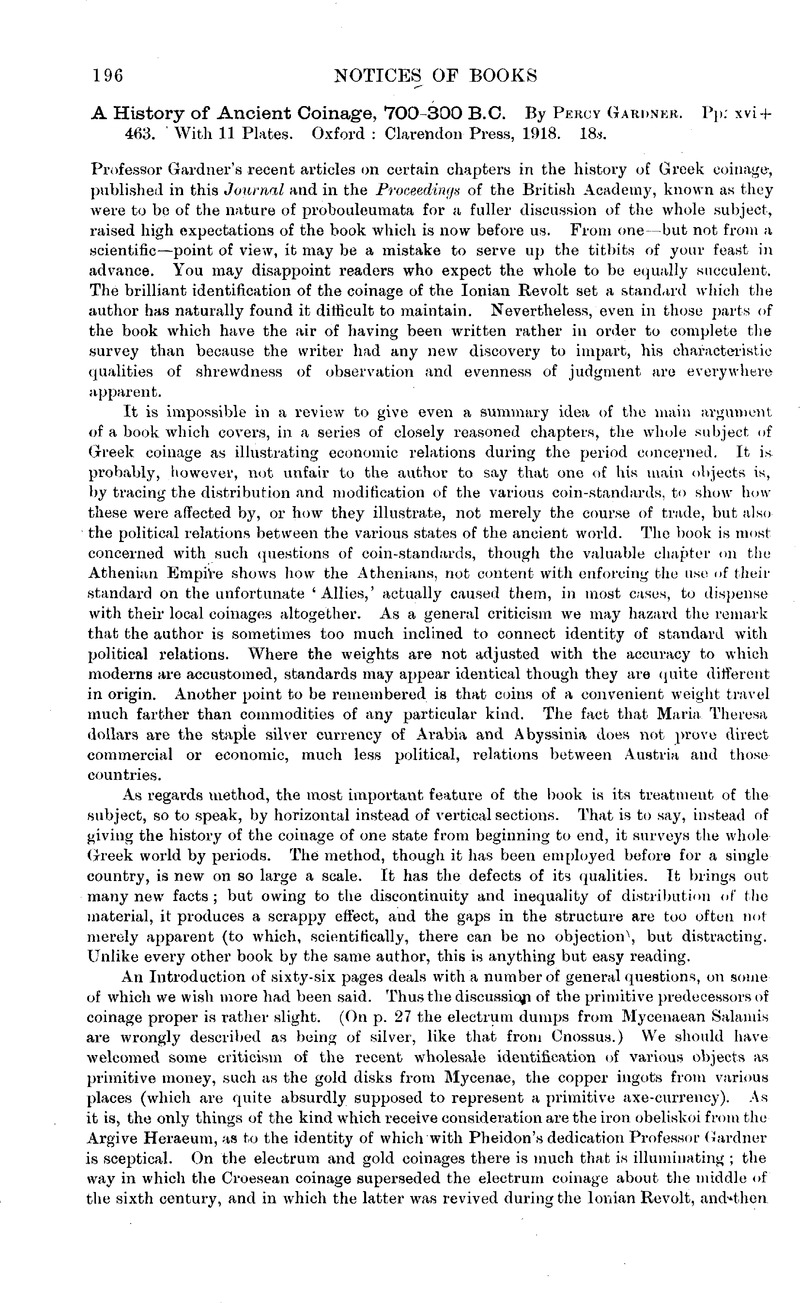No CrossRef data available.
Article contents
A History of Ancient Coinage, 700–300 B.C. By Percy Gardner. Pp. xvi + 463. With 11 Plates. Oxford: Clarendon Press, 1918. 18s.
Review products
Published online by Cambridge University Press: 23 December 2013
Abstract

- Type
- Notices of Books
- Information
- Copyright
- Copyright © The Society for the Promotion of Hellenic Studies 1918
References
1 Cp. the Hebrew kikkar (Gk. κίγχαρ, Joseph., , Ant. Iud. iii. 6. 7Google Scholar; Cl. Rev. xix. p. 256), which means both a round cake and a weight of 3000 shekels.
2 Head says the coins extend “from the earlier half of the sixth century,” which is not the same thing as saying that they begin in the early years of that century. In my Historical Greek Coins (1906), which Professor Gardner does not cite, I have adopted a chronology much closer to that which finds favour with him than the one proposed in 1897 in my article on Solon's Reform. But I confess it seems to me to be very arbitrary to assign to Athens only the owl and the amphora (Head takes only the owl) out of a series of ‘Wappenmünzen’ which are all of the same fabric. This question is still far from settled.
3 I have given the proof of this in Hermes, 1901, p 317. The statement in Roberts, and Gardner, , Intr. to Greek Epigraphy, p. 260Google Scholar, that the weight is too high in proportion, is incorrect. The weight, by comparison of the sp. gr. of gold and silver, is exact.


